Weekly Index
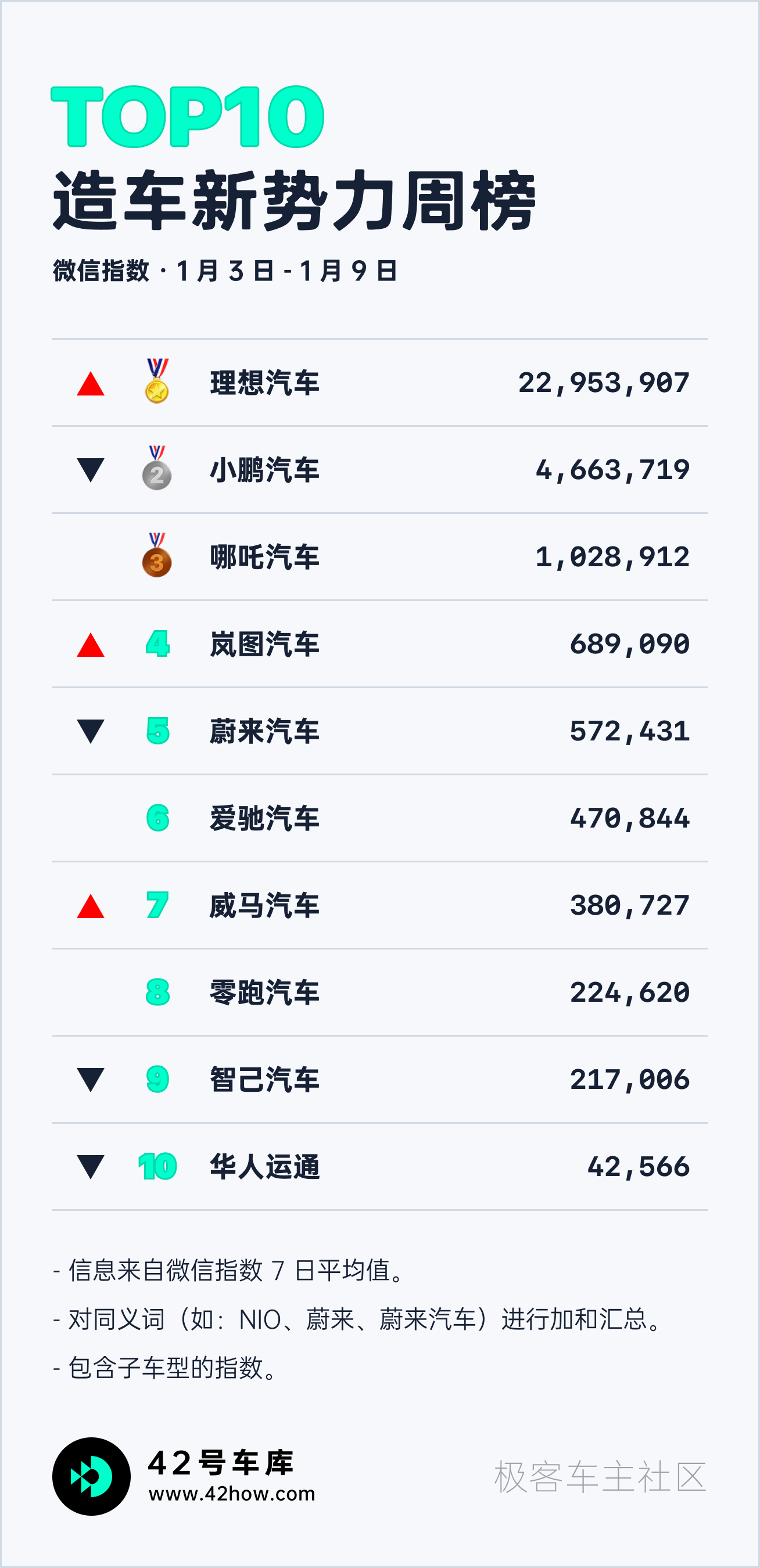
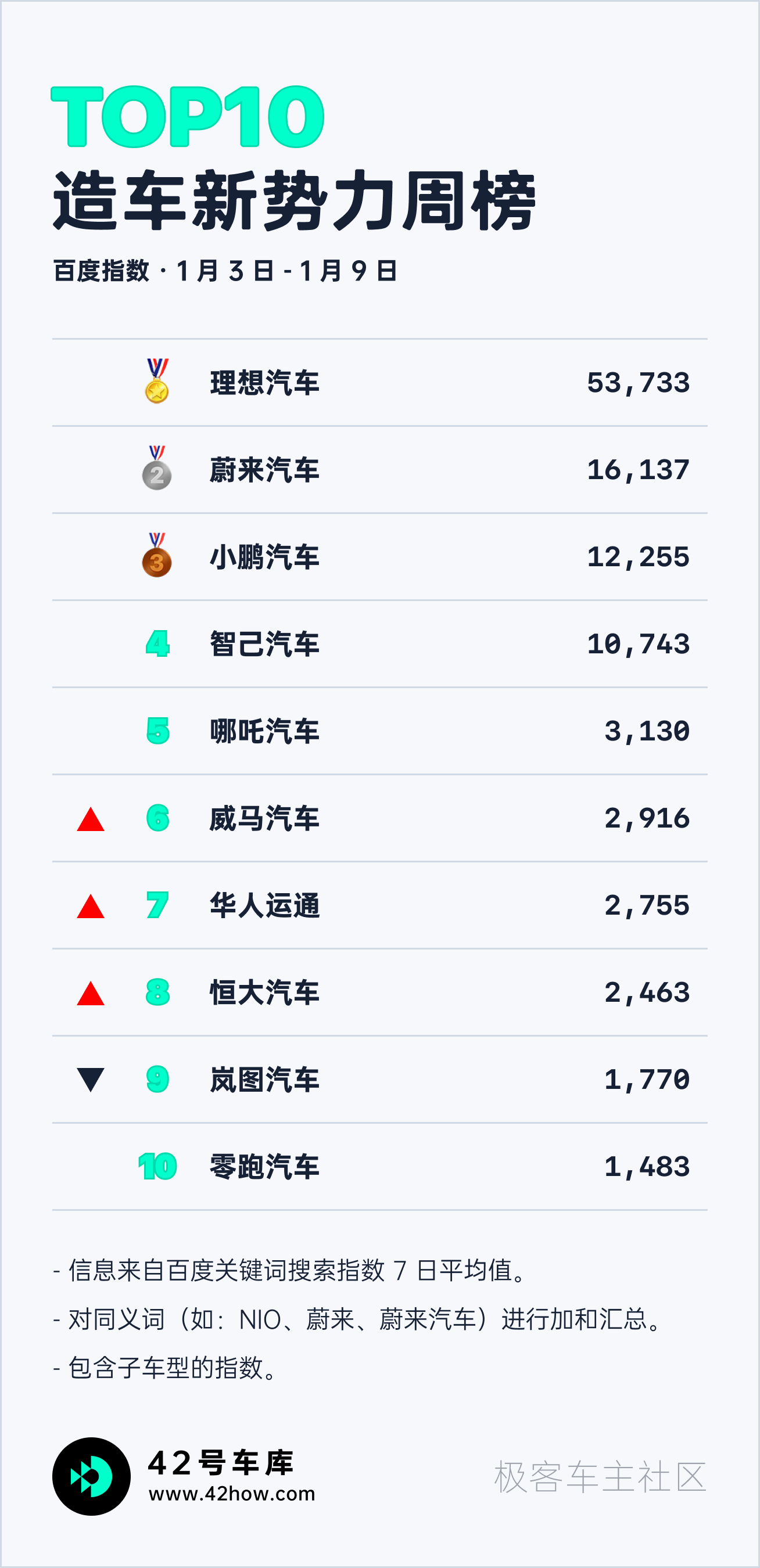
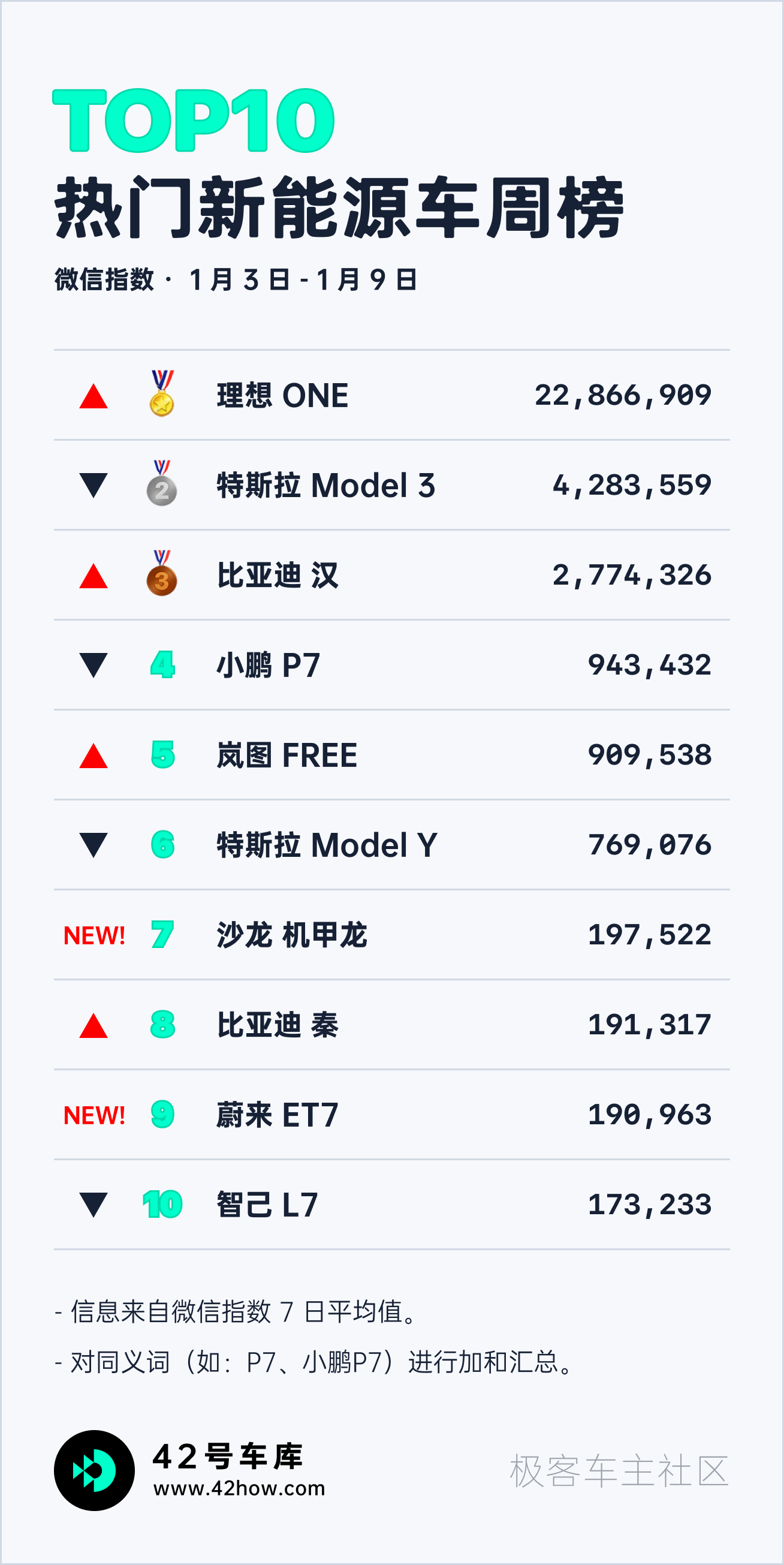
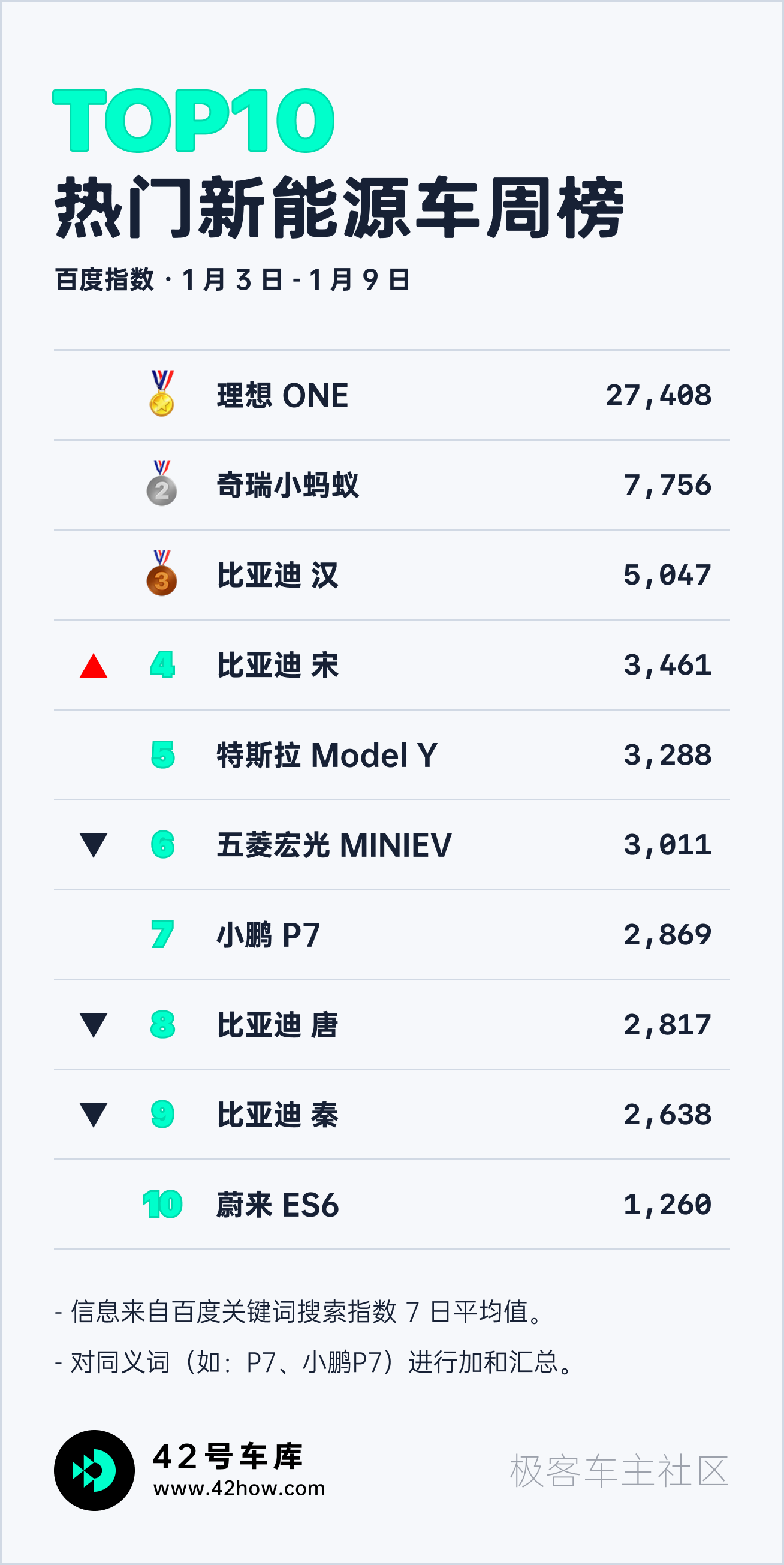
Weekly News
Beijing’s Two Sessions Will Promote Xiaomi and Ideal Automobiles
On January 6th, the 15th session of the 5th Beijing Municipal People’s Congress was opened at the Beijing Conference Center. In the government report of this Beijing Two Sessions, the 2022 technology innovation goal promoted the start of Xiaomi automobiles and the construction of Ideal automobiles.
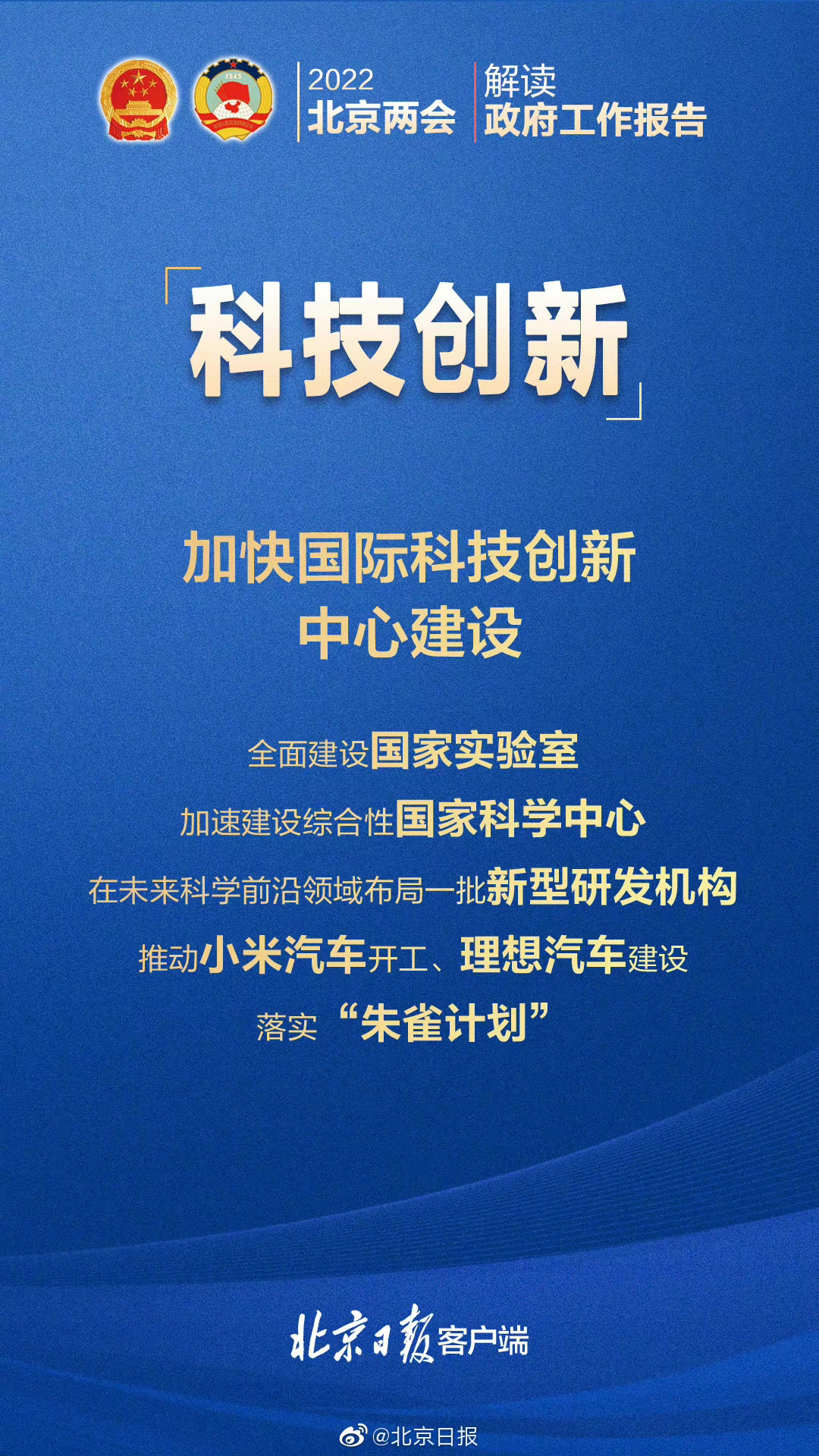
In addition, the Two Sessions pointed out that Beijing will focus on the digital economy, strengthen the construction of new infrastructure such as computing power-algorithm platform, launch 20 major application scenarios, and carry out the construction of high-level autonomous driving demonstration zone 3.0.

Quick Comment:
Thanks to the support of the government, let’s review the plans of these two car companies in Beijing. On November 27, 2021, the Beijing Economic and Technological Development Zone Management Committee and Xiaomi Technology signed a contract. With the signing of the “Cooperation Agreement”, the official announcement of the establishment of Xiaomi Automobile in the Beijing Economic Development Zone was made. The Xiaomi Automobile project will build the headquarters base and sales headquarters, R&D headquarters. The complete vehicle factory with an annual output of 300,000 vehicles will be constructed in two phases, and the production capacity of the first and second phases will be 150,000 vehicles each. The first car is expected to be produced and put into mass production in 2024.
Ideal Automobile also started the construction of its Beijing factory on October 16, 2021. The Ideal Automobile Beijing factory will use existing workshops for transformation, with a reuse rate of 60%. The official also stated that the entire project investment exceeds 6 billion yuan. The welding and assembly workshop has more than 600 robots and can achieve flexible production of 4 models at the same time. It is expected to start production at the end of 2023. Let’s also look forward to how this support can help these two car companies grow.
Tesla’s FSD in the US increases in price to $12,000On January 8th, Tesla CEO Musk stated on Twitter that the FSD price in the US region will increase to $12,000 (approximately RMB 76,000).
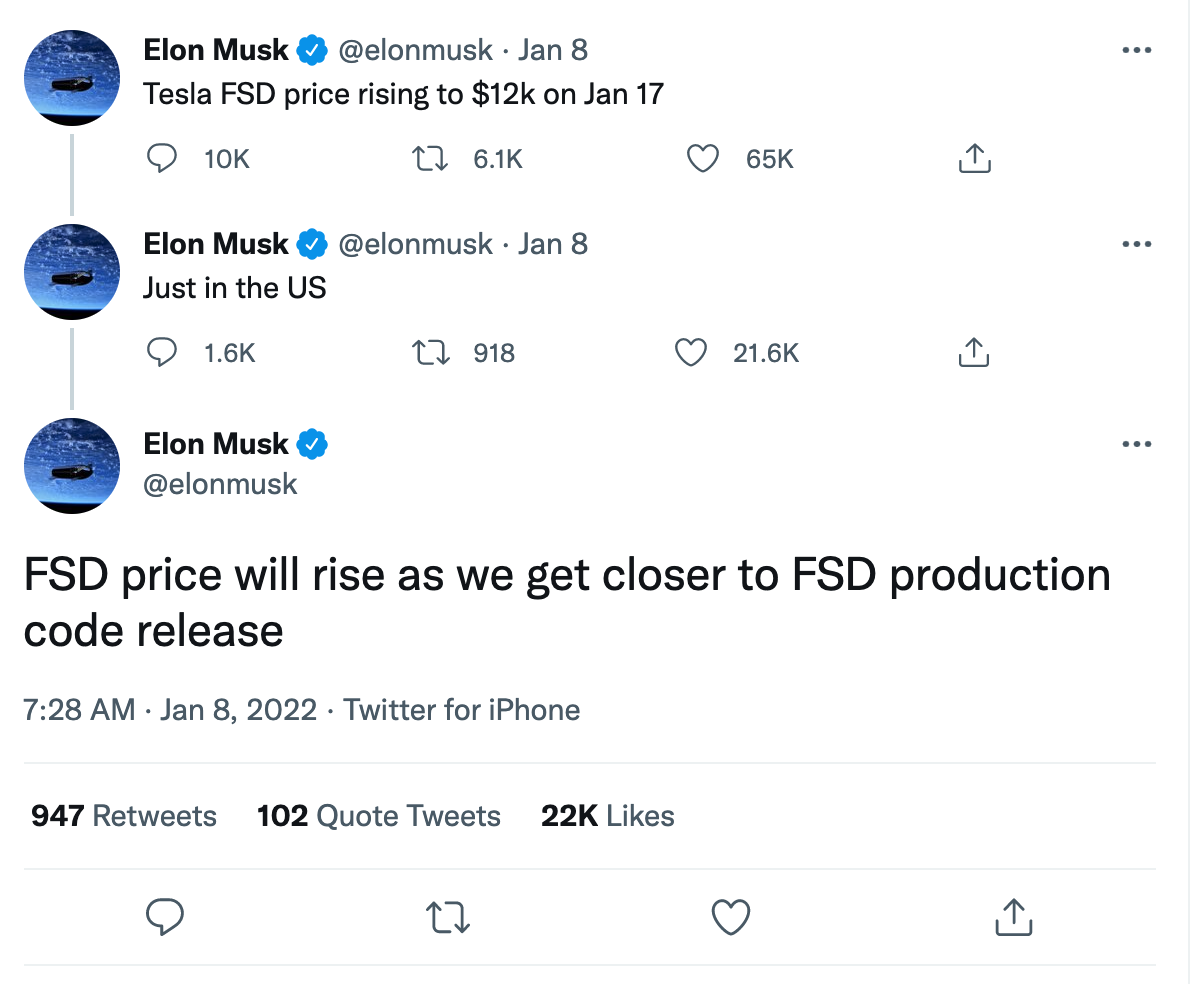
Currently, there are two ways to purchase FSD, either a lump sum payment or a monthly subscription. The current lump sum payment price in the US market is $10,000, and the subscription price for vehicles that have activated Enhanced Autopilot (EAP) is $99/month, and for vehicles that haven’t activated EAP is $199/month. Musk did not disclose any plans to increase the subscription version’s price.
Comments:
Since its launch, the US version of FSD has undergone multiple price increases, and $12,000 (approximately RMB 76,000) is twice the initial price of $6,000 (approximately RMB 38,000). As the Chinese version of FSD has not kept up with the update speed of the US version in terms of functionality, it has only increased the price once, from the initial RMB 56,000 to the current RMB 64,000. According to Tesla’s previously announced news, only 2% of Tesla owners in China purchased FSD in 2020.
As the US version of FSD continues to improve its functionality, Tesla will inevitably launch more updates for the Chinese version of FSD in the future, and it is believed that the price will also align with the US version at that time.
Mobileye Launches 3 New Chips
On January 4th, 2022, at CES held in Las Vegas, Mobileye announced the launch of three new chips.
According to Mobileye’s publicity, EyeQ Ultra is its most powerful chip specially designed for autonomous driving so far. EyeQ Ultra achieves energy efficiency optimization under 176 TOPS of computing power, and is based on the 7th generation EyeQ chip technology architecture, which can provide performance and power consumption performance that meets the needs of autonomous driving cars, especially all-electric autonomous driving cars.
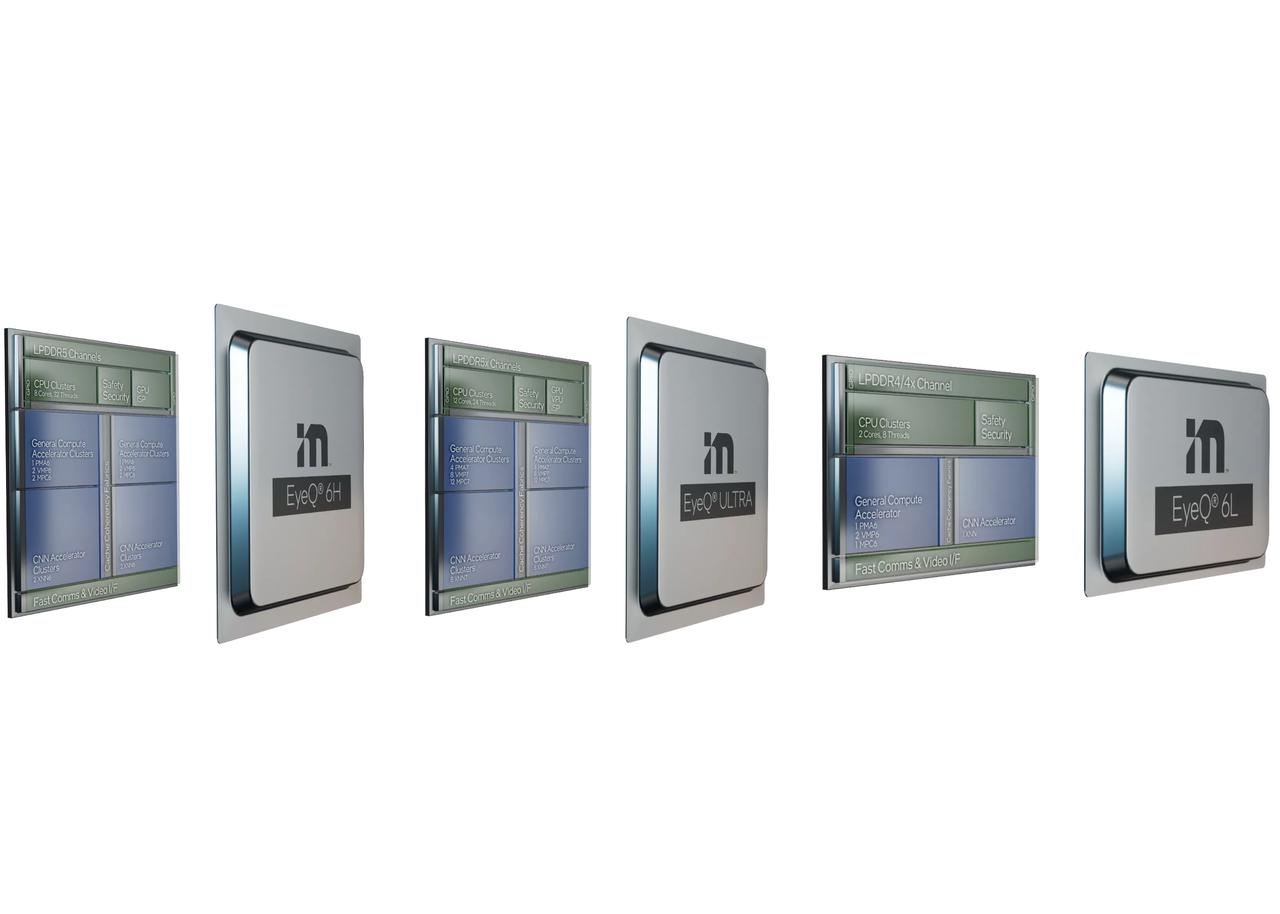
Comments:The performance of the EyeQ Ultra, the most powerful one, is equivalent to the sum of the performance of 10 pieces of EyeQ5. Leveraging the 5-nanometer process technology, EyeQ Ultra can meet all the requirements and application scenarios of L4 autonomous driving while avoiding the additional energy consumption and costs resulting from the combination of multiple system integrated chips. Like the previous generation EyeQ, EyeQ Ultra is co-designed with Mobileye software, enabling the chip to achieve extremely high energy efficiency ratio without sacrificing performance. This chip is expected to be available at the end of 2023 and will achieve full-scale mass production for vehicles in 2025.
The EyeQ6H on the left can achieve advanced ADAS and partial autonomous driving functions through the configuration of a full-surround camera. In terms of power, it is equivalent to two EyeQ5 system integrated chips. However, EyeQ6H supports visualization and performs better under high loads. This centralized solution will provide all L2+ADAS functions, including multi-camera processing capabilities including parking cameras, and can support third-party applications such as visualization parking and driver monitoring. This chip is expected to provide samples starting this year and will be mass-produced at the end of 2024.
The EyeQ6L on the right is the successor product of EyeQ4, with a package size of only 55% of EyeQ4. This chip has been providing samples since last year and is expected to be mass-produced in mid-2023, and will be used in L2 level driving assistance system.
BMW releases iX M60 and new technology allowing color changing of car body
On January 5, 2022, the iX M60 made its global debut at the 2022 North American CES and its domestic guide price was announced at 996,900 RMB.
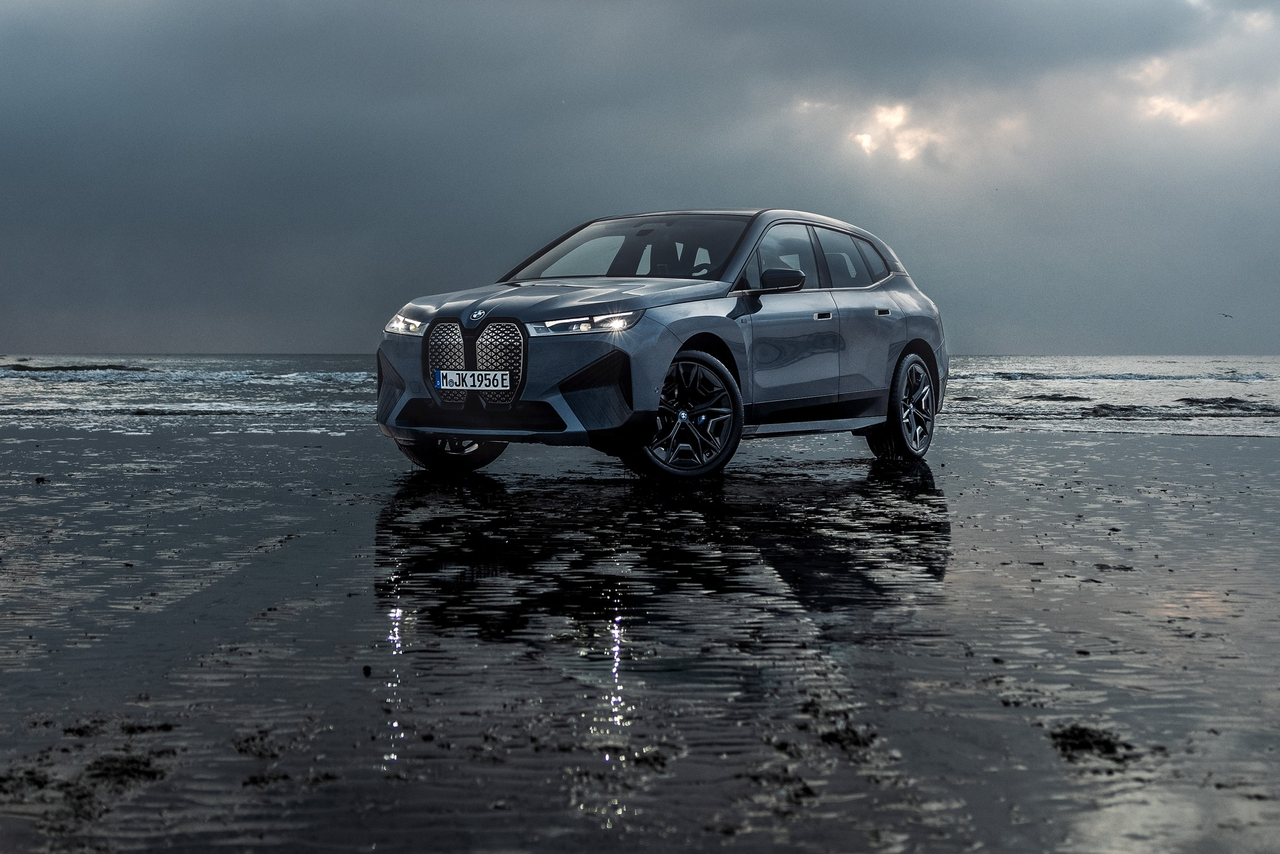
The iX M60 uses an M-exclusive electric drive system with an output power of 455 kW and a peak torque of 1,100 N·m, becoming BMW’s first model with a torque exceeding 1,000 N·m. It only takes 3.8 seconds to accelerate to 100 km/h for this 2.5-tonne “big guy”.
Regarding the battery, the iX M60 is equipped with a total capacity of 111.5 kWh high-voltage battery pack, with a WLTP range of 566 km and a comprehensive energy consumption of 24.7-21.7 kWh/100 km.
Interestingly, this car also showed off a body color-changing technology at CES, which had a very cool display effect.
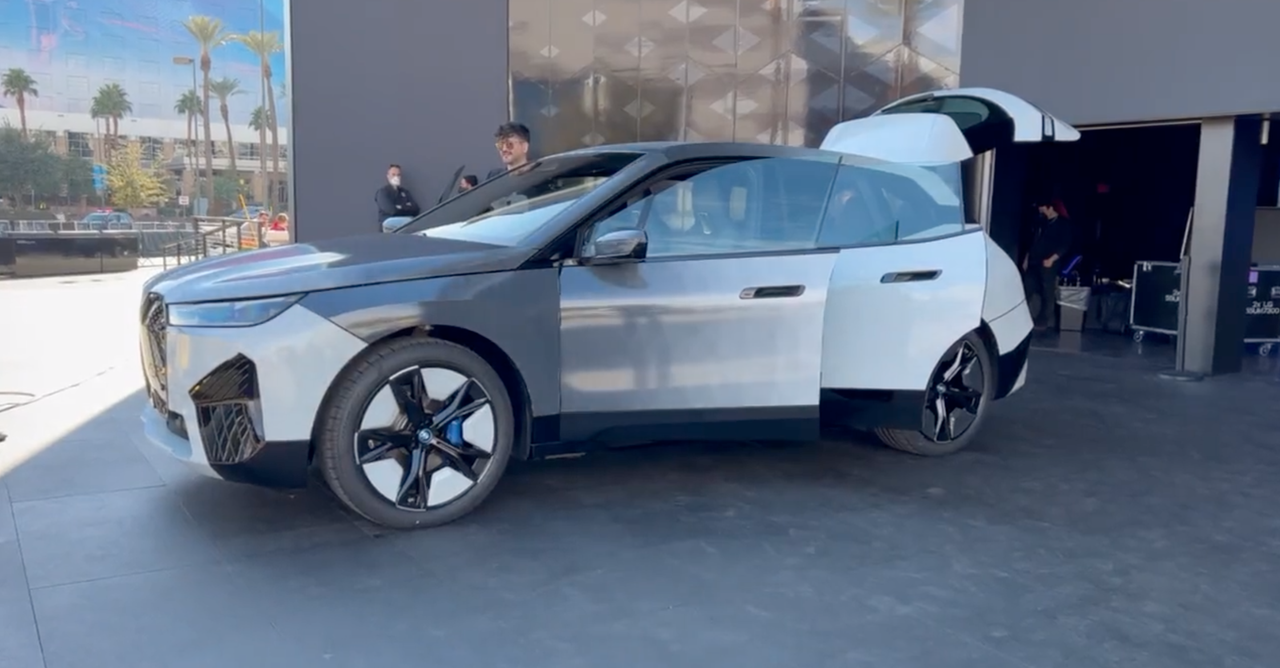
Quick Review:The variable iX body color has aroused great interest from the public, but the technology behind it is not new. It is the same technology as the Kindle screen that you use to prepare instant noodles – electronic ink screen, also known as “electronic paper display technology”. BMW has directly applied it to the car body, achieving the color changing effect.
Applying 2D technology on a 3D car body still poses some technical challenges. Here, I need to introduce a simple mathematical principle. Dividing the surface of a circle infinitely will result in a 2D graphic which is near the surface. BMW did just that, turning the car body from “3D” to “2D”, but inevitably the workload of splitting the surface is considerable. Therefore, with the aid of an AI-powered design method called “generative design”, BMW calculated a set of custom patterns for the car body.

Then, through laser cutting, this highly customized pattern is carved on the car body. Finally, BMW added a “screen” to the body, coated it with a waterproof layer, and the color-changing car body was successfully completed.
Volkswagen’s ID.BUZZ may be released on March 9
On January 6, 2022, Herbert Diess, CEO of Volkswagen, tweeted, “The legend returns on March 9, 2022!”.

In terms of design, the ID.BUZZ is very similar to the ID.BUZZ concept car showcased by Volkswagen at the Detroit Auto Show in 2017, with a high degree of restoration. At the same time, it can also be clearly seen that it pays tribute to Volkswagen’s classic T1 van, cleverly combining technology and classic design.
According to Volkswagen’s official website in China, the ID.BUZZ is built on the MEB-XL expansion platform, with a length of 4,942mm, a width of 1,976mm, a height of 1,963mm, a wheelbase of 3,300mm, and can seat up to 8 people.
Quick Comment:
The ID.BUZZ is equipped with a four-wheel drive system in the powertrain, including two electric motors with a power of 150 kW each, which is speculated to be the same as the ID.4 and ID.6 models under the MEB platform. With a maximum capacity of 111 kWh battery pack, it can achieve 0-100 km/h acceleration within 5 seconds and a top speed of 160 km/h.
In addition, ID.BUZZ will be Volkswagen’s first van capable of achieving fully automatic driving, and it is expected that the “ID. Cruise” technology can be applied starting from 2025. In this mode, the driver can turn the seat 180 degrees to face the passengers.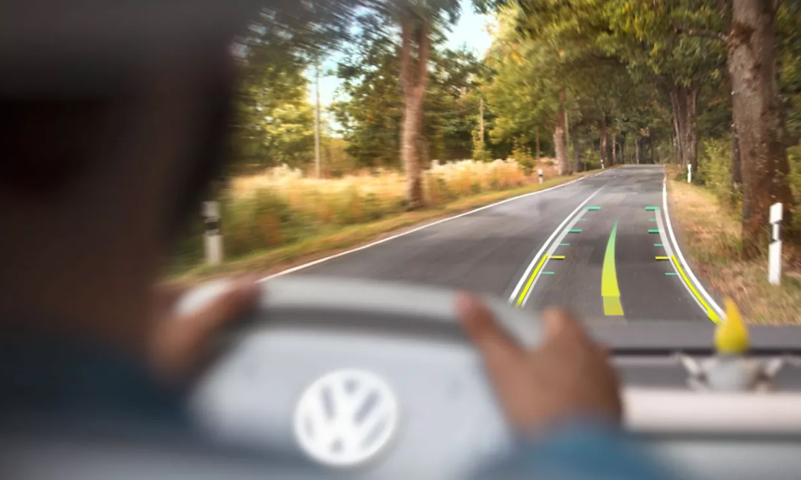
When it comes to the interior, the ID.BUZZ features flexible seating arrangements and does not carry traditional gauges or controllers, but instead comes with a touch-enabled multifunctional steering wheel, an AR-enhanced head-up display, and a center console tablet.
Sony unveils new concept car VISION-S 02 with a new company at CES
At CES, another company that has gained widespread attention is Sony, which brought an SUV concept car called VISION-S 02.
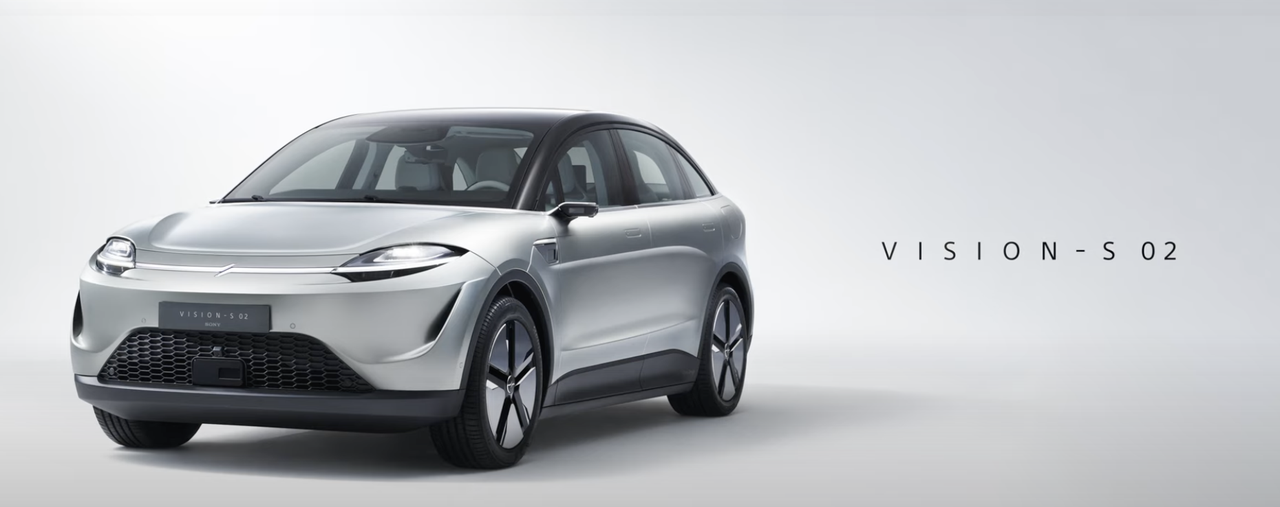
The concept car has a body size of 4,895 mm x 1,930 mm x 1,650 mm with a wheelbase of 3,030 mm. The new car will adopt a 2+3+2 7-seater layout, and a 4-seater version will also be available. The powertrain part will be equipped with a four-wheel drive system consisting of front and rear dual motors, with a single motor output of 200 kW.
As for the autonomous driving sensors, the Sony VISION-S concept car includes 40 sensors, which are divided into cameras, radars, ultrasonic sensors, and lidars, and support autonomous driving and parking.
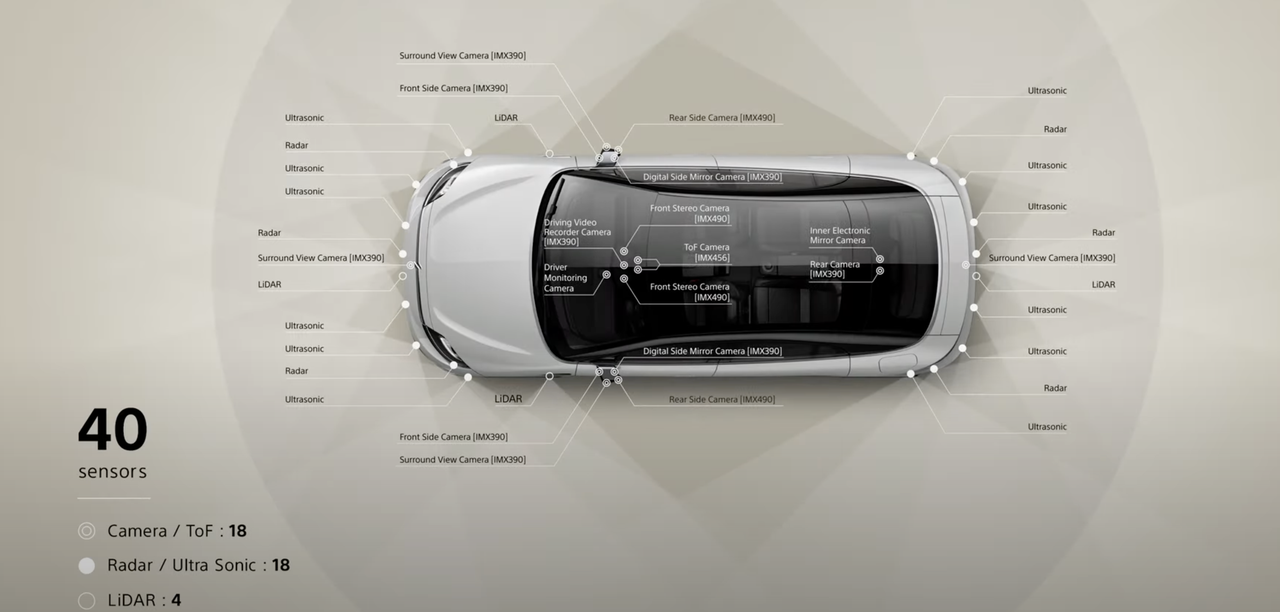
Quick Comment:
The SUV concept car VISION-S 02 released this time uses the same electric vehicle platform as the Sony sports car VISION-S 01 released at CES last year. The VISION-S 01 sports car began road testing in Europe in December 2020.
Sony CEO Kenichiro Yoshida said that the company would explore the possibility of commercializing VISION-S. In addition, Yoshida announced that Sony would establish a new company called Sony Mobility Inc this spring, which will focus on the field of mobile travel and electric vehicles. Yoshida said that with Sony’s imaging technology, sensor technology, and entertainment technology, Sony has the ability to “redefine mobile travel” in the 5G era.
This article is a translation by ChatGPT of a Chinese report from 42HOW. If you have any questions about it, please email bd@42how.com.
